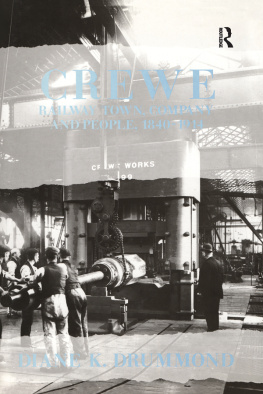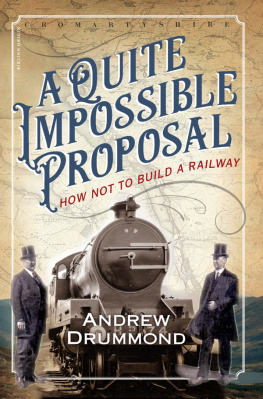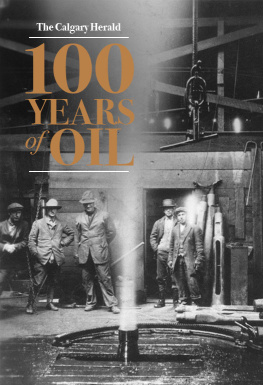Copyright 2013 Max Foran
Published by AU Press, Athabasca University
1200, 10011 109 Street, Edmonton, AB T 5 J 3 S 8
ISBN 978-1-927536-08-1 (print) 978-1-927536-09-8 (PDF) 978-1-927536-10-4 (epub)
Cover and interior design by Natalie Olsen, Kisscut Design.
Printed and bound in Canada by Marquis Book Printers.
Library and Archives Canada Cataloguing in Publication
Foran, Max
Development derailed : Calgary and the CPR, 196264 / Max Foran.
Includes bibliographical references and index.
Issued also in electronic formats.
ISBN 978-1-927536-08-1
1. Economic development Political aspects Alberta Calgary History 20th century. 2. City planning Alberta Calgary History 20th century. 3. Urban renewal Alberta Calgary History 20th century. 4. Public-private sector cooperation Alberta Calgary History 20th century. 5. Canadian Pacific Railway Company Planning History 20th century. 6. Railroads Political aspects Alberta Calgary History 20th century. 7. Calgary (Alta.) Economic conditions 20th century. I. Title.
FC 3697.4.F676 2013 971.233803 C 2012-906353-3
We acknowledge the financial support of the Government of Canada through the Canada Book Fund ( CBF ) for our publishing activities.
Assistance provided by the Government of Alberta, Alberta Multimedia Development Fund.
Please contact AU Press, Athabasca University at aupress@athabascau.ca for permissions and copyright information.
Introduction
Life is a strange mixture of black and white, and nowhere will a person encounter more striking extremes of joy and sorrow, headaches and thrills, bouquets and brickbats than in public service at the civic level. There, close to the people, close to the wallets from which taxes are paid and close to garbage can problems, politics can be at their roughest.
Grant MacEwan, diary entry, spring 1963
In June 1962, the Canadian Pacific Railway Company (CPR) unveiled plans to redevelop part of its right-of-way in the heart of downtown Calgary. Covering two blocks to the east of the historic Palliser Hotel, the multi-million-dollar project envisaged retail, office, and convention facilities, as well as a major transportation centre, and it was to occupy land that was currently underused and only marginally developed. The news was received ecstatically by local political and business leaders, who foresaw increased tax revenue and a reversal of the urban blight that was depressing land values and discouraging investment. A year later, the original concept was expanded and took official form through an agreement between the City of Calgary and the railway company. The new plan would involve developing a much larger area, as well as removing all railway tracks from the central downtown area and rerouting the main line along the south bank of the Bow River. Despite the best intentions of its supporters, this grand design for the reshaping of Calgarys downtown proved too much for the unlikely partners. Changing perceptions of the project and disagreement over details were compounded by ill-preparedness, indecision, inefficiency, poor communication, and mistrust. Calgarys most controversial and far-reaching project to date died in June 1964 amid the weariness of mutual default.
THE CONTEXT
The citys agreement with the CPR was born in optimism and rooted in the transformations that were changing Canadas urban landscapes in the postWorld War II era. Two main factors were at work. Together, they combined to create an urban space much different from the industrial city, where land-use patterns were undifferentiated and concentrated around the downtown core. The first was the advent of the Central (later Canada) Mortgage and Housing Corporation (CMHC). Created in 1945 to administer federal participation in housing under the National Housing Act (1944), the CMHC implemented the affordable lending and mortgage insurance policies that helped transform the nations spatial residential patterns. A focus on detached housing, bigger and wider freeways, the outward alignment of industrial areas, and the decentralization of retail and other services were dominant themes in the city plans that began emerging in the 1950s and 1960s.
One serious casualty in this transformation was the inner city in particular, the downtown core. Increasingly, inner-city residents were moving out to the new suburban utopias. Shoppers In this period, the troubling question of what to with downtowns with their limited access, their aging infrastructure, and their declining importance amid residential flight and diminishing shopper interest was almost as important to city managers and planners as the need to accommodate outward growth.
Solutions were limited. Access to downtown could be alleviated via freeways. For example, the 1959 plan for Metropolitan Toronto provided for over a hundred miles of expressways.
The impetus to redevelop Canadian downtowns fell largely to the public sector. Sometimes it occurred at the local level, where civic governments promoted redevelopment on their own land and at times sold it at premium prices to encourage private redevelopment. It took the form of new civic facilities. Another intervention was through the federally sponsored urban renewal programs under the National Housing Act of 1944 and its subsequent amendments. Originally, such schemes involved the demolition of existing degraded housing in inner-city areas and replacing the demolished homes with higher-density public housing complexes. The scope of the act was later widened to include commercial redevelopment.
The emphasis on redevelopment rather than on other options like rehabilitation or conservation created a mindset that saw change in terms of fresh beginnings. Regardless of its form or its impact on other variables, redevelopment was perceived as a natural good. With plenty of architects and designers willing to offer their visions for the future and many construction companies ready to enable them, any change was good change as long as it involved newness. This fixation with modernity had mixed results. Especially in terms of housing, the urban renewal movement of this period with its bulldozer techniques produced a newness that often did not stand the test of time.










